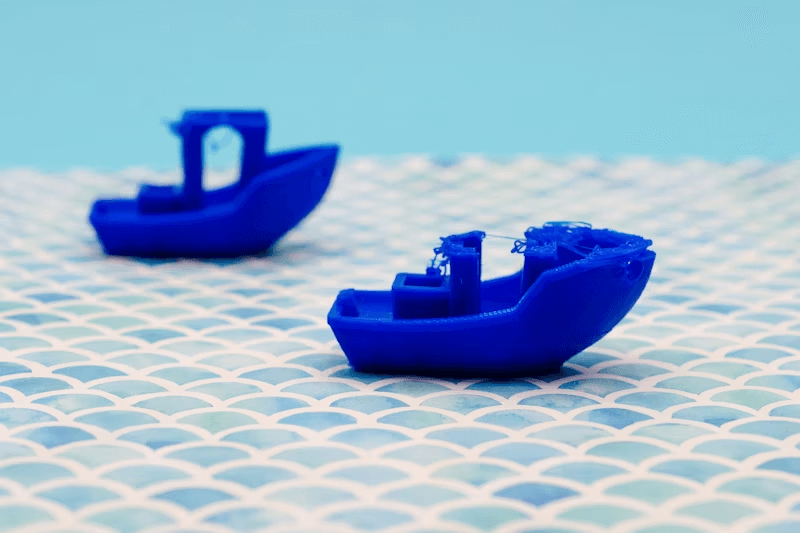Today’s insights are brought to you by my colleagues, global futurist, Graeme Codrington, and leadership thinker, Keith Coats.
TL;DR: The 5 Ingredients for an Experimental Culture are:
1. Structure Experiments Like a Lab.
2. Embrace Failure.
3. Measure and Reward the Right Behaviours.
4. Keep trying.
5. Start Small, Start Now!
Why Experimentation Matters
In times of disruptive change, one of the most crucial things you can do to ensure your business thrives is to embrace a culture of experimentation. Today’s business environment is marked by uncertainty and complexity, making traditional experience and established methods less reliable.
Experimentation allows us to challenge assumptions, test new ideas, and find innovative solutions, big and small. It’s a skill that every business leader should cultivate within their teams.
Consider the world of digital advertising. Previously, companies would invest heavily in a single, polished advert, hoping for the best. Now, platforms like social media enable rapid, iterative testing of hundreds of variations in a matter of hours. This approach, known as A/B testing, exemplifies the power of experimentation: small, quick trials to find optimal solutions.
The same principle can be applied across all business functions – whether it’s optimising meetings and email communications, wellness campaigns, flexible working arrangements, sales plans, or customer engagement strategies.

Five Ingredients for an Experimental Culture
To successfully build a culture of experimentation, your organisation needs to focus on five key elements:
1. Proper Science: Structuring Experiments Like a Lab
Remember the excitement of a high school science experiment? Take a look at this template for a structured science experiment. Successful business experimentation follows a similar structured approach:
- Hypothesis: Define what you want to test.
- Materials and Resources: Identify what’s needed.
- Procedure: Outline steps clearly.
- Safety Analysis: Anticipate potential risks.
- Execution and Documentation: Record each step and result.
- Analysis and Conclusion: Evaluate results against the hypothesis.
Encourage your team to run small experiments regularly, using this structured method.
The goal is to continuously refine and improve your processes, one test at a time.
2. Embracing Failure
Innovation and experimentation go hand in hand with failure. To foster a truly innovative culture, you must accept that not all experiments will succeed – and that’s okay (in fact that’s part of the point).
Redefine failure as a learning opportunity:
- Open Discussions: Regularly review both successes and failures.
- Failure as a Step Forward: Understand that each failure brings you closer to success.
- Change Your Response: Shift from blaming to learning and adapting.
Failure isn’t the end; it’s a crucial part of the process that leads to better outcomes.
In his book, “Failing Forward” John Maxwell explains:
“If you can take action and keep making mistakes you gain experience. That experience eventually brings competence, and you make fewer mistakes. As a result of making fewer mistakes, your fear becomes less paralyzing. But the whole cycle-breaking process starts with action. You must act your way into feeling, not wait for positive emotions to carry you forward.

You get what you measure and reward. To build an experimental culture, ensure that your measurement and reward systems support experimentation:
- Reward Effort, Not Just Success: Recognize and celebrate attempts, regardless of the outcome.
- Encourage Experimentation: Make it clear that trying new things is valued.
4. Thought Experiments: The Power of “Ten Times”
Seth Godin must take credit for teaching me this. You see, we humans are woefully unprepared to deal with orders of magnitude.
- What would happen if suddenly our company got ten times as many orders.
- What would the streets look like with ten times the traffic.
- What happens if we suddenly earned one-tenth the revenue next quarter?
Ten times as fast. Ten times as powerful. Ten times the profit (I see I have your attention again). Orders of magnitude are not normally how we think.
Seth Godin says: “Because dramatic shifts rarely happen, we bracket everything on the increment, preparing for just a relatively small change here or there. Except those messages now travel 50 times faster than they used to, sent to us by 100 times as many people as we grew up expecting. Except that we’re spending ten times as much time with a device, and one-tenth as much time reading a book. Here it comes. The future adds a zero.”
So, try some thought experiments with your team. What would happen if you had an order of magnitude in your business. Clients needed your product to be one-tenth of the price and delivered ten times faster than before. Your brain will initially freeze, and you’ll say it’s impossible. But don’t stop there. Push yourself.
“What if” is one of the most powerful of all questions. So, ask again what would you do if you were faced with situations like this. Maybe you’ll surprise yourselves by thinking of things you’ve never thought of before – some things that might actually allow you to change what you do today.
You may never get to “ten times”, but you can do better than you’re doing now. With an experiment or two to test it out.
By the way, “ten times” is only one such thought experiment. An experimental culture is built on a variety of such questions.
What if? Why not? Why do we do it this way? Can this work better?
Watch this video for inspiration: What legacy will you create?
5. Persistence: The Importance of Never Giving Up
Thomas Edison famously tested thousands of light bulbs before finding success. The lesson? Persistence pays off. Not every experiment will yield results, but the ones that do can transform your business. Encourage your team to keep experimenting, learning, and improving.
Start Small, Start Now!
Building an experimental culture doesn’t require a huge investment. Start small, encourage regular experimentation, and build your organisation’s “experimental muscle.”
By embracing this approach, you’ll be better equipped to navigate the uncertainties of the future and position your business for long-term success.
If you want to learn more about specific techniques you can practice to improve your creative thinking skills and work towards experimentation, read this article from our Futures Institute: Build a Culture of Experimentation for Yourself and Your Team.
The take away: experiment more – it’s the key to thriving in the future of work.
For the past two decades, Graeme has worked with some of the world’s most recognised brands, travelling to over 80 countries in total, and speaking to around 100,000 people every year. He is the author of 5 best-selling books, and on faculty at 5 top global business schools.
Keith Coats is a founding partner of TomorrowToday Global and leadership specialist. He is now based in Cape Town, South Africa having relocated from London towards the end of 2021. Keith works with blue chips companies and in multiple business school leadership programmes worldwide helping senior leaders prepare today for the challenges and threats of tomorrow…and sometimes, the ‘day after tomorrow’.
Recently Keith’s travel has included working throughout the UK, the USA, Saudi Arabia, Dubai, Abu Dhabi, Germany, Switzerland, Singapore, and of course, South Africa.



>“What if” is one of the most powerful of all questions. So, ask again what would you do if you were faced with situations like this. Maybe you’ll surprise yourselves by thinking of things you’ve never thought of before – some things that might actually allow you to change what you do today.”<
I really like the emphasis on such a simple question. "What if!?"
We spend most of our time defending against this very question because the known is so familiar and reassuring, even though it's actually anything but if we look closer. We often get stuck here and leaders here "But we tried that already and it didn't work and here are a thousand reasons why."
A corollary question or phrase to recognize and de-potentiate this resistance is "Up until now…" To mash these phrases together, "What if we got complete with our past because up until now we've struggled to ask the very question 'What if'?"